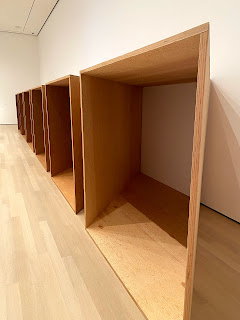Join me on a journey through the Met Museum, exploring ancient herms and uncovering the enduring influence of these fascinating artifacts.
🏛️ Spent the day exploring the Metropolitan Museum of Art, and guess what caught my eye? Herms! These ancient pillars featured the busts of gods like Hermes and marked roads, entrances, and even doorways in the ancient world. Swipe left to see the striking example I found!
🚶♂️Why Hermes? He’s not just any god; he’s the patron saint of travelers and the psychopomp ferrying souls to the afterlife. Talk about multitasking! Hermes is also the god of commerce. These pillars were more than just art; they were divine guideposts for ancient society.
🚄 Flashback to earlier this summer when I was admiring the statue of Hermes perched atop Grand Central Station. Mind. Blown. 🤯 I suddenly realized that Grand Central is like a modern-day herm! It’s a transit hub guiding travelers and bustling with shops and eateries, making it a center of commerce, too.
🔁 The ancient and the modern worlds aren’t as far apart as we often think. It’s awe-inspiring to see that the symbolism of herms and Hermes has traveled through time, just like the travelers they protect and guide.
🌟 So next time you pass through Grand Central or another bustling hub, maybe take a moment to appreciate the millennia of human history that continue to resonate in our daily lives. Who knows what other timeless symbols are around us, quietly shaping our world?
•
•
•









